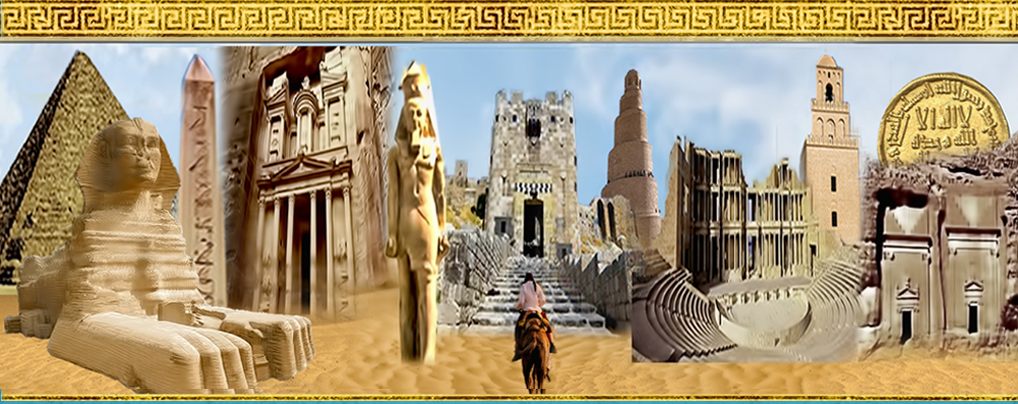Journal of the General Union of Arab Archaeologists

Abstract
رموز صناعة المطر من خلال الفن الصخري في شرق وجنوب أفريقيا: مقارنة بالقبائل البدائية الحالية [AR]
تعد صناعة المطر واحدة من أهم الطقوس الحياتية منذ عصور ما قبل التاريخ لا سيما خلال العصر الحجري الحديث، وذلك بسبب تحول الطقس إلى الجاف في ذلك الوقت، فأصبح للمطر دور مهم في الحياة، ومن ثم يحاول البحث توضيح أهمية طقوس صناعة المطر كمصدر للمياه ودور صانع المطر ومكانته المميزة فى مجتمعات شرق وجنوب إفريقيا خلال عصور ما قبل التاريخ، وذلك من خلال دراسة مناظر صناعة المطر ورموزه فى الفن الصخرى آنذاك. تباينت رموز صناعة المطر فى الفن الصخري ما بين الرموز الحيوانية والهندسية التى تنوعت بين أشكال الدوائر المتداخلة، الأشكال الحلزونية، النقاط السوداء وجميعها كانت رموز تشير إلى صناعة المطر. ارتبطت صناعة المطر أيضاً ببعض الطقوس المتعلقة بالسحر، والدين والرقص والصلاة وتقديم القرابين والأضاحي البشرية والدفنات الحيوانية، أما إله المطر فقد ارتبط بالعديد من الرموز مثل قوس قزح والثعبان، واُعتبر قوس قزح بمثابة قلادة الله. وكان صانع المطر هو الوسيط بين إله المطر وبين قومه. سيتناول البحث أيضًا أهم أماكن صناعة المطر وخاصة التلال والكهوف والملاجئ الصخرية، كما سيوضح العلاقة بين أرواح السلف من الأجداد وصناعة الأمطار، ويوضح أيضاً كيف ارتبطت القرابين والدفنات الحيوانية بصناعة الأمطار فى ذلك الوقت، وكيف أكدت رموز الفن الصخري على ذلك. أخيرًا، يهدف البحث إلى إعادة تفسير رموز ومشاهد الفن الصخرى التى تدل على طقوس صناعة المطر فى عصور ما قبل التاريخ، من خلال مقارنتها بالطقوس الحالية لبعض القبائل البدائية فى شرق وجنوب إفريقيا.
[EN]
Rainmaking was one of the most important life rituals since prehistoric times, especially in the Neolithic era, because of the dry weather at that time, and the centrality of water for life. This article tries to clarify the significance of rainmaking and its rituals, and the role of the rainmaker in eastern and southern African societies, by studying Rainmaking scenes through rock art and its symbols in prehistoric times. The symbols of rainmaking included various animal and geometric symbols. The geometric designs include circles, spirals, and black dots, which related to rain making during prehistoric times. Rainmaking connected with rituals that expressed magic, and religion, and were often associated with dances, prayer, and offering sacrifice or burial of animals, especially during the Neolithic period. Rain-gods were connected also with symbols such as the rainbow, since early humans considered the rainbow as the God’s necklace, and python snakes. The rainmaker had a great social position in his tribe because he was a mediator between the people and the rain god. The article will also study the most important places of rainmaking, which include hills, caves, and rock shelters. These places were associated with rainmaking during prehistoric times. The article will clarify the link between the souls of the ancestors and rainmaking, the animal sacrifices associated with the rainmaking at that time, and the symbols of rock art indicative of that. Finally, the article aims to reinterpret the symbols and scenes of rock art indicative of rain-making rituals in prehistoric times, by comparing them with the current rituals of traditional tribes in eastern and southern Africa.
Recommended Citation
Khamis, Zainab
(2023)
"RAINMAKING THROUGH THE ROCK ART IN EAST AND SOUTH AFRICA: A COMPARISON WITH CURRENT TRADITIONAL TRIBES,"
Journal of the General Union of Arab Archaeologists: Vol. 8:
Iss.
1, Article 6.
Available at:
https://digitalcommons.aaru.edu.jo/jguaa/vol8/iss1/6
Included in
Historic Preservation and Conservation Commons, History Commons, History of Art, Architecture, and Archaeology Commons

